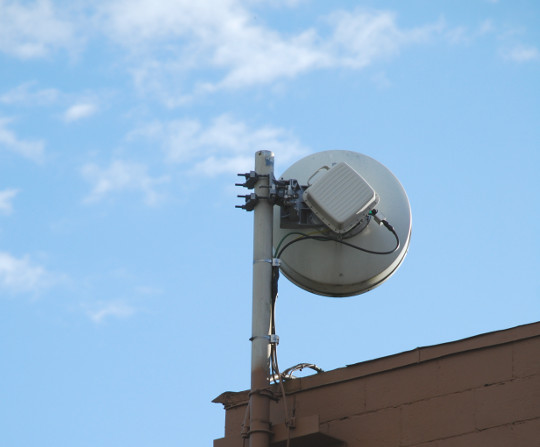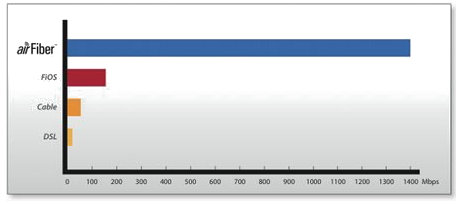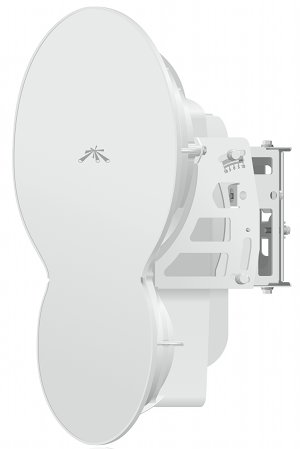 OneGigabit offers incredibly fast and highly reliable business Internet service in the metro Vancouver area via two types of access technologies:
OneGigabit offers incredibly fast and highly reliable business Internet service in the metro Vancouver area via two types of access technologies:
-
Point-to-point high bandwidth microwave, using 1’ to 2’ diameter roof-top antennas. This service is available at speeds of up to 2 Gbps in the areas shown in the coverage map.
-
Fiber optic access at dedicated speeds of 1 Gbps to 10 Gbps. Depending on location, fiber optic services can be provisioned by existing underground duct space, dark fiber, micro-trenching rapid deployment fiber or a combination of several installtaion methods.
All business class Internet connections come with a 99.999% service level agreement and access to 24 x 7 technical support for emergencies.
In areas which cannot yet be economically served by underground fiber, OneGigabit will install a microwave antenna on your building’s roof. Point-to-point high bandwidth microwave is used to bridge distances of up to 15 km from one of our centrally located tower sites in the metro Vancouver area. This technology is dependent upon clear line of sight from your roof to our nearest access point node. The on site survey process to confirm service availability at a particular location usually takes 15 to 20 minutes.
OneGigabit also offers a full range of premises wiring and managed network services to meet the needs of your growing business. If your business is relocating, expanding or renovating, please contact us to learn more about how your business can take advantage of network access at speeds of greater than 1 Gbps.
 Metro Ethernet Gigabit Wireless
Metro Ethernet Gigabit Wireless
OneGigabit’s metro Ethernet wireless solutions include two types of technologies, both of which are capable of speeds in excess of one gigabit per second, a magnitude faster than the connections offered by our competitors.
The first type of wireless link we offer, the AirFiber1400, is suitable for many locations within 9.0 km of the downtown core. This is a full duplex 700 Mbps system (1.4 Gbps aggregate data throughput) operating in the 24 GHz band. It is designed to service buildings that are presently unserved by underground fiber optic cables.
The second type of wireless link, the AirFiber2000 has a shorter range, operating within a 7.0 km radius of the downtown core, but is capable of even higher data rates at 1.0 Gbps full duplex (2.0 Gbps aggregate data throughput). This precisely matches the data rate of a standard full duplex 1000BaseT or 1000BaseSX Gigabit Ethernet link. This system operates in the 80 GHz E-band microwave spectrum.
The main advantages of the AirFiber1400 and AirFiber2000 are their carrier class reliability, using the same type of packet microwave technology utilized by Canada’s largest cellular carriers, and their significantly lower installation cost when compared to the time and expense of extending new underground fiber optic cables across city streets and sidewalks. Both the AirFiber1400 and AirFiber2000 use small antennas which are only one foot or two feet in diameter. These units are designed to be unobtrusive on rooftops, much smaller than a typical ventilation unit or air conditioner. Mounting is accomplished with the use of a non penetrating roof mount that requires zero hole drilling in the structure or opening of the building’s roof membrane. The roof-top installation of an AirFiber1400 or AirFiber2000 can typically be accomplished by one technician in one day.
Contact us today to learn more about how these wireless networking systems can dramatically improve your business’s Internet access speeds.
How fast is 700 Mbps? Fast enough to:
- Download a two hour 720p HD H.264 format video file in 47 seconds.
- Upload a two minute length 1080p HD video clip to Youtube in two seconds.
- Transfer a massive AutoCAD 3D model in four seconds.
- Download a 100MB file in one second.
- Mirror the entire contents of a major Linux distribution’s package cache in less than 40 minutes.
Underground Fiber Cables Offer High Performance, but High Cost:
Underground fiber optic cable installation in the downtown area is complicated by a number of possible variables and external considerations. It is commonly a construction process involving six or more personnel and heavy equipment working over a multiple day time scale. Even the simplest type of micro-trenched installation may require a massive, extremely noisy concrete saw powered by a gasoline engine, scheduled road closures, drilling into building foundations and city construction permits. More complicated fiber builds, even for a short distance of 300 meters may require trenching and excavation by heavy equipment, in addition to relocation of other pre-existing underground utilities such as gas, water or electrical lines. The necessity to coordinate deep trenching with Telus, FortisBC and BCHydro to avoid the disruption of pre-existing critical underground utilities can turn a one week project into a multiple-week construction project involving more than a dozen persons. Trenching under city streets also usually requires multiple day road closures which must be planned well in advance with the City of Vancouver’s road works / engineering department.
Due to the reasons listed above, the installation of underground fiber optic cables has until very recently been limited to the largest “Class A” office structures in the downtown core. Much of the existing underground fiber optic cable infrastructure in Vancouver was funded with venture capital more than ten years ago during the original “dot com” era economic boom. In the post-2002 era, additional fiber optic cables have been extended to “Class B” buildings using concrete saw micro trenching technology. The AirFiber1400 and AirFiber2000 are intended to address those buildings which have been bypassed by major telecommunications carriers. Although an unserved building may be passed directly by a pre-existing underground fiber optic cable, the cost of opening the street, installing a new junction and extending service to the structure frequently exceeds $80,000.
For smaller office buildings, the only broadband Internet access options which are available use highly dated, copper based infrastructure. The same analog phone lines that were installed 40+ years ago by BCTel are now being reused for DSL services. Multiple 1.54 Mbps T1 lines are slow and expensive, while access via ADSL2+ modems on copper phone lines attempts to use consumer/residential grade equipment for business purposes. With DSL limited by loop lengths and crosstalk between cables, typical performance is 10 Mbps or less. ADSL2+ technology utilized by competing ISPs introduces latency of 35 ms to 45 ms from the modem to the first upstream hop at the service provider’s DSLAM. Similarly, “business” cablemodem services attempt to use 25+ year old copper cables for modern net access,with maximum speeds in the range of 20 to 40 Mbps, far slower than fiber or modern packet microwave radio systems such as the AirFiber1400 or AirFiber2000.
The One Gigabit Per Second Solution:
If your building has line of sight from its roof to any of the major office towers in the core of Vancouver, and is located within 9 km of downtown, it can most likely be served by the AIrFiber1400 or AirFiber2000 packet microwave systems. The full set of equipment resembles the following:
- One non penetrating roof mount measuring approximately one or two square meters in size.
- One antenna, one foot or two feet in diameter. This antenna can be painted to match the colour of the existing roof parapet or elevator penthouse if necessary.
- One weatherproof low voltage DC cable with 1 Gbps Ethernet connected from antenna on mount to indoor router.
- One indoor 12U wall mounted rackmount cabinet. This unit measures approximately 21″ H x 19″ W x 20.5″ D and can be located at almost any secure location within the building, typically in a wiring closet, basement cable trunk room or elevator penthouse. This cabinet contains an uninterruptible battery backup power supply, power over Ethernet circuitry to support the AirFiber1400 / 2000 radio, router with 1 Gbps interface and other network equipment. The indoor equipment cabinet can be located up to 100 meters distant from the radio.